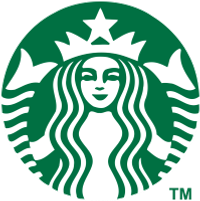
Starbucks Corp
NASDAQ:SBUX
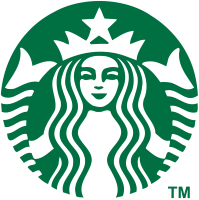

| US |

|
Johnson & Johnson
NYSE:JNJ
|
Pharmaceuticals
|
| US |

|
Berkshire Hathaway Inc
NYSE:BRK.A
|
Financial Services
|
| US |

|
Bank of America Corp
NYSE:BAC
|
Banking
|
| US |

|
Mastercard Inc
NYSE:MA
|
Technology
|
| US |
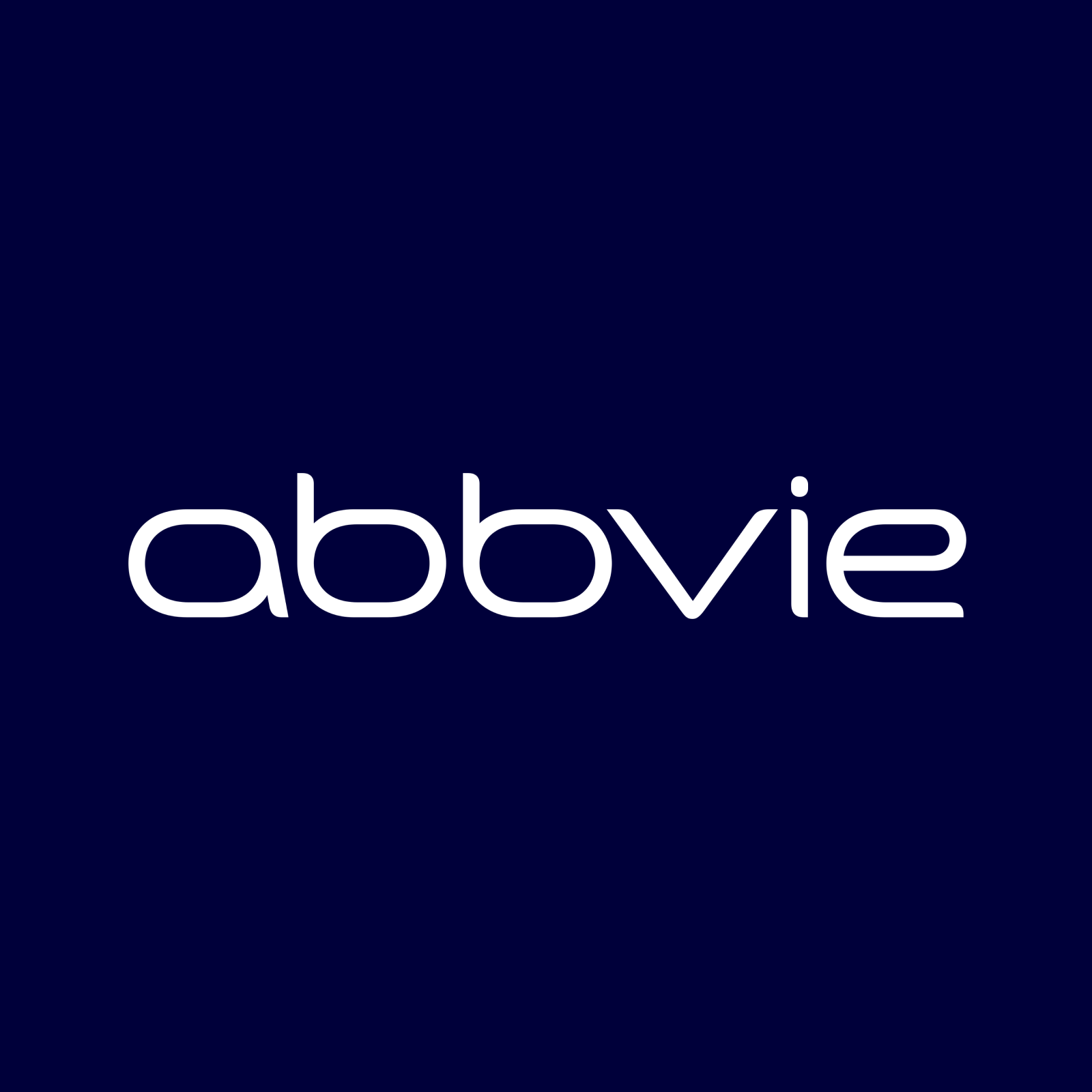
|
Abbvie Inc
NYSE:ABBV
|
Biotechnology
|
| US |

|
Pfizer Inc
NYSE:PFE
|
Pharmaceuticals
|
| US |

|
Palantir Technologies Inc
NYSE:PLTR
|
Technology
|
| US |

|
Nike Inc
NYSE:NKE
|
Textiles, Apparel & Luxury Goods
|
| US |

|
Visa Inc
NYSE:V
|
Technology
|
| CN |

|
Alibaba Group Holding Ltd
NYSE:BABA
|
Retail
|
| US |

|
3M Co
NYSE:MMM
|
Industrial Conglomerates
|
| US |

|
JPMorgan Chase & Co
NYSE:JPM
|
Banking
|
| US |

|
Coca-Cola Co
NYSE:KO
|
Beverages
|
| US |

|
Realty Income Corp
NYSE:O
|
Real Estate
|
| US |

|
Walt Disney Co
NYSE:DIS
|
Media
|
| US |

|
PayPal Holdings Inc
NASDAQ:PYPL
|
Technology
|
Utilize notes to systematically review your investment decisions. By reflecting on past outcomes, you can discern effective strategies and identify those that underperformed. This continuous feedback loop enables you to adapt and refine your approach, optimizing for future success.
Each note serves as a learning point, offering insights into your decision-making processes. Over time, you'll accumulate a personalized database of knowledge, enhancing your ability to make informed decisions quickly and effectively.
With a comprehensive record of your investment history at your fingertips, you can compare current opportunities against past experiences. This not only bolsters your confidence but also ensures that each decision is grounded in a well-documented rationale.
Do you really want to delete this note?
This action cannot be undone.

| 52 Week Range |
72.5
107.21
|
| Price Target |
|
We'll email you a reminder when the closing price reaches USD.
Choose the stock you wish to monitor with a price alert.

|
Johnson & Johnson
NYSE:JNJ
|
US |

|
Berkshire Hathaway Inc
NYSE:BRK.A
|
US |

|
Bank of America Corp
NYSE:BAC
|
US |

|
Mastercard Inc
NYSE:MA
|
US |

|
Abbvie Inc
NYSE:ABBV
|
US |

|
Pfizer Inc
NYSE:PFE
|
US |

|
Palantir Technologies Inc
NYSE:PLTR
|
US |

|
Nike Inc
NYSE:NKE
|
US |

|
Visa Inc
NYSE:V
|
US |

|
Alibaba Group Holding Ltd
NYSE:BABA
|
CN |

|
3M Co
NYSE:MMM
|
US |

|
JPMorgan Chase & Co
NYSE:JPM
|
US |

|
Coca-Cola Co
NYSE:KO
|
US |

|
Realty Income Corp
NYSE:O
|
US |

|
Walt Disney Co
NYSE:DIS
|
US |

|
PayPal Holdings Inc
NASDAQ:PYPL
|
US |
This alert will be permanently deleted.
 Starbucks Corp
Starbucks Corp


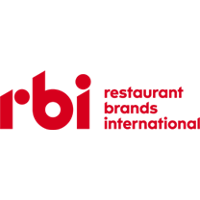
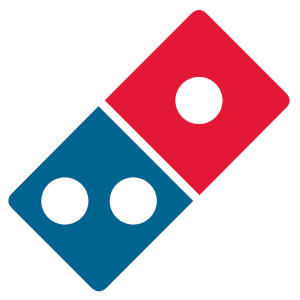
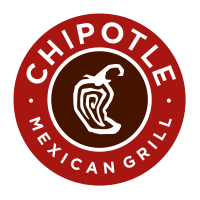
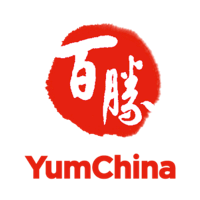

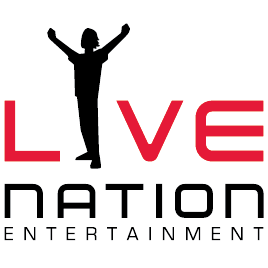

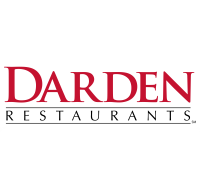
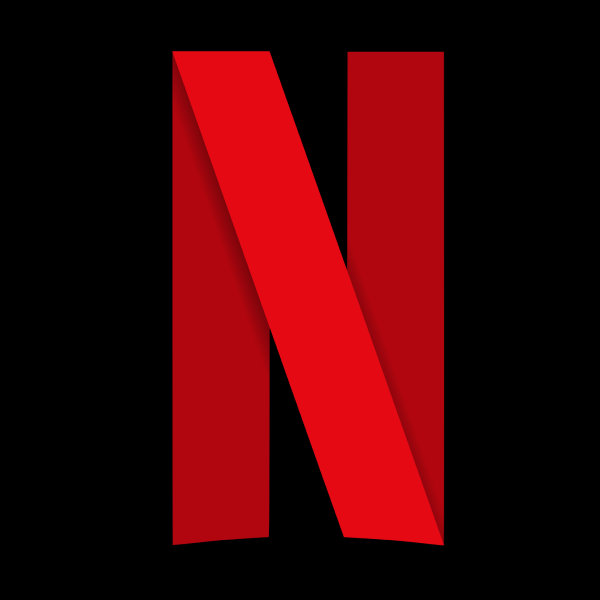

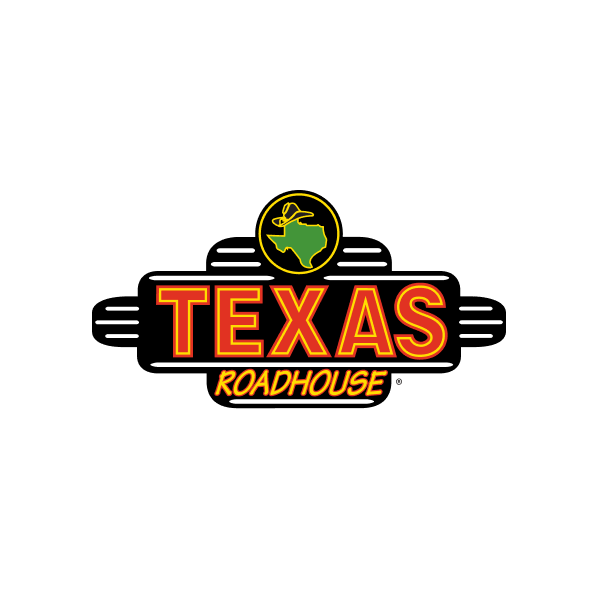


 You don't have any saved screeners yet
You don't have any saved screeners yet

Good afternoon. My name is Alex, and I will be your conference operator today. I would like to welcome everyone to Starbucks Second Quarter Fiscal Year 2022 Conference Call. All lines have been placed on mute to prevent any background noise. After the speakers’ remarks, there will be a question-and-answer session. [Operator Instructions]
I will now turn the call over to Tiffany Willis, Vice President of Investor Relations. Ms. Willis, you may now begin your conference.
Good afternoon, everyone, and thank you for joining us to discuss Starbucks' second quarter fiscal year 2022 results. Today's discussion will be led by Howard Schultz, Interim Chief Executive Officer; Belinda Wong, Chairwoman of Starbucks China; Brady Brewer, Executive Vice President and Chief Marketing Officer; and Rachel Ruggeri, Executive Vice President and Chief Financial Officer. And for Q&A, we will be joined by John Culver, Group President of North America and Chief Operating Officer; Michael Conway, Group President of International and Channel Development; and Adam Brotman, Strategic Advisor on Digital Innovation.
This conference call will include forward-looking statements, which are subject to various risks and uncertainties that can cause our actual results to differ materially from these statements. Any such statements should be considered in conjunction with cautionary statements in our earnings release and risk factors discussed in our filings with the SEC, including our latest annual report on Form 10-K and quarterly report on Form 10-Q. Starbucks assumes no obligation to update these forward-looking statements or information.
GAAP results in second quarter fiscal year 2022 include several items related to strategic actions, including restructuring and impairment charges, transaction and integration costs and other items. These items are excluded from our non-GAAP results. All numbers referenced on today's call are on a non-GAAP basis, unless otherwise noted. For non-GAAP financial measures mentioned in today's call, please refer to the earnings release and our website at investor.starbucks.com to find a reconciliation of those non-GAAP measures to their corresponding GAAP measures.
This conference call is being webcast, and an archive of the webcast will be available on our website through Friday, June 3, 2022. For calendar planning purposes, please note that our third quarter fiscal year 2022 earnings conference call has been tentatively scheduled for Tuesday, August 2, 2022.
And with that, allow me to turn the call over to Howard.
Thank you, Tiffany. Love and responsibility brought me back to Starbucks, my love of the company and my deep responsibility to our partners and shareholders. In the month I've been back, I've traveled the country and met with thousands of Starbucks retail store partners and visited all 5 of our roasting plants, and I've learned first-hand about the unique challenges confronting the company today. I've also experienced the passionate relationship our partners have with the company and the enduring emotional connection our customers have to the Starbucks brand. COVID presented unprecedented operating challenges to consumer brands. COVID also drove dramatic changes in customer behavior that Starbucks stores and systems were not designed or built for. The challenges have been amplified by record demand for Starbucks coffee in our U.S. stores that has accelerated with the lifting of COVID restrictions.
Our Q2 results tell the story. In Q2, our sales comp in North America grew 12% over last year, 23% compared to Q2 2020. Both drive-thru and Mobile Order & Pay activity have surged, together now generating over 70% of our U.S. store volume. Delivery, a nearly $500 million business, is up 30% in the first half of fiscal year. And in our stores, customers are increasingly further customizing already complex handcrafted cold beverages.
The combination of shifts and customer patterns, accelerating demand and algorithms built for different customer behaviors has placed tremendous strain on our U.S. store partners. Ordinarily, we would have anticipated and invested ahead of the shifts we're seeing, but COVID disruptions interfered with our ability to make the required investments in store design, operations, infrastructure and technology to do so. As a result, we've been unable to meet the relentless demand we're seeing in our U.S. stores as seamlessly as our customers and partners expect and candidly deserve. Simply said, we do not, today, have the adequate capacity to meet the growing demand for Starbucks coffees.
Going forward, we will be making investments in our partners and business to literally catch up on investments we have not made and make further investments to position the company ahead of the coming growth curve. We will also be accelerating our new store growth with 90% of new stores being high-returning drive-thru. Our newest class of drive-thrus will integrate new store designs, technology, including more handheld devices and equipment improvements that will increase efficiency, speed of service, and we believe deliver even greater profitability in the future. We will then incorporate the new technologies and equipment into our existing stores and provide our people with the tools and resources they need to elevate the Starbucks experience we deliver to our customers and create even more demand in the future.
And we'll be making significant investments to extend our digital capabilities and deepen our digital connection to customers and the emotional attachment our customers have to the Starbucks brand. Returns on our digital investments are consistently among the highest returns we generate, which brings us to the decision we will revisit in fiscal '23 to suspend stock buybacks. Buying back stock yields us, on average, about a 10% return. With Starbucks' treasure trove of global assets, a 10% return is not satisfactory to me. Throughout our history, the investments we have made in our people and business have always delivered outsized returns to our shareholders.
We're so eager to show off our pipeline of disruptive innovation that we're moving our Investor Day up to September in Seattle from December in New York. The significant innovation around technology and personalization we will reveal our industry game-changers that will further increase store productivity and efficiency. What you will see is the coming transformation and reimagination of the Starbucks customer and partner experiences.
The transformation will accelerate already record demand in our stores, but the investments will enable us to handle the increased demand and deliver increased profitability, while also delivering an elevated experience to our customers, and most importantly, reducing strain on our partners. We must reintroduce joy in the customer and emotional connection back into the partner experience.
We've identified over $200 million of investment that's incremental to the significant investments we've already committed to in our U.S. company-operated stores this year. These include further investments in training, wage and equipment and new investments in internal communication with our people, where we will launch a new partner app to communicate directly with all store partners.
We will also be reaffirming our commitment to coffee excellence and partner education by reintroducing our black apron, Coffee Master and origin trip programs. And in 2023, we will introduce enhanced digital tipping for our partners. We believe these investments will improve retention and recruiting and elevate the experience we deliver to our partners and our customers.
Over the last month, we've realigned Starbucks U.S. organization to focus entirely on transforming and reimagining our core U.S. business. Belinda Wong will share plans for accelerated growth in China as soon as COVID-related mobility restrictions there are lifted. And make no mistake, our aspirations around China have never been greater and I remain convinced Starbucks' business in China will be eventually larger than our business in the U.S.
We have a big breakthrough idea around the launch of Starbucks Web 3.0 and a unique platform for NFTs that Brady Brewer and Adam Brotman, architect of Mobile Order & Pay and the Starbucks digital app, who is serving as a special adviser to us, will shortly tell you about. I believe Web 3.0 will create an authentic digital third place experience and drive substantial new revenue streams for Starbucks and be accretive to the brand.
Our Web 3.0 strategy is a proxy for the greater ambition we have for the company going forward. Despite the fact that post COVID, our customers are not using our stores the same way, and we've been operationally challenged as a result, our national retail footprint and best-in-class real estate portfolio is still enabling us to meet customers wherever they are and irrespective of their need state. This relentless demand we're seeing in our stores today underscores this reality.
Looking ahead, trying to imagine thousands of vastly more productive and efficient Starbucks stores reconfigured to align with today's customer behavior and built around technology that will deliver increased speed of service, improved labor management and reduced unit cost, an elevated partner and customer experience. Now imagine the accretive impact to our financials when we reengineer our stores to deliver what we're capable of in delivering and arm our people with the tools and resources they need to once again exceed our customers' expectations.
From my perspective, I understand what's needed, and I'm back to lead this transformation and committed to seeing it through. Starbucks sits alone with something few, if any, of our peers literally have, and that is unmet demand. Companies spend hundreds of millions of dollars on marketing, promotions and social media trying to create demand. We have demand everywhere we look, despite having not lived up to the expectations we set for ourselves, let alone exceeding the expectations of our customers and our people since the pandemic.
The big opportunity ahead for us is to meet strong and growing demand in our stores more efficiently and effectively and to leverage technology to enhance productivity and reduce burden on our store partners.
Let me highlight just a few sources of the accelerating demand we're seeing in our U.S. stores and business. Mobile Order & Pay, an over $4 billion business, is up 400% in 5 years, is up 20% over last year. Our $500 million delivery business is up 30% over last year. The Starbucks Card puts our brand in the hands of nearly 120 million people and is alone larger than the entire gift card category. Starbucks customers are increasingly prepaying for their purchases in huge volumes, roughly $11 billion last year, and we are on track to exceed that figure this year. At this moment, well over $1 billion is loaded on Starbucks Cards waiting to be spent in our stores. And active Starbucks Rewards membership in the U.S. grew 17% over last year to Q2 to 27 million members. Strong underlying demand means the productivity and efficiency investments I've described represent literally low-hanging fruit available to us right now.
And ever since, Starbucks remains a growth company today and will remain a growth company into the future. Two related dynamics underscore the power of the equity of the Starbucks brand and support our growth aspirations: consistent pricing power and strong demand for Starbucks products in CPG channels. Over the last year, we raised prices several times to address increasing inflationary pressures. Yet, we experienced negligible customer attrition, once again demonstrating the elasticity of demand for Starbucks coffee.
Even so, inflationary pressures have outpaced our price increases, resulting in several points of margin compression in the short term and costing us over 200 basis points in the first half of the fiscal year. In Q2, we were able to absorb the incremental cost while still delivering on our EPS expectations.
In our channels business, Starbucks today has the #1 share in the U.S. at at-home coffee and the #1 share in global ready-to-drink coffee. Customer loyalty inside and outside our stores has never been greater. You have to ask yourself how many retail companies have a consumer brand that is best of class and literally the #1 position in grocery and in multiple channels of distribution? You'd be hard-pressed to find any.
I could not be more optimistic or confident in the successful transformation and reimagination of our store partner and customer experiences.
Let me turn to China. I cannot think of any other Western consumer brand, let alone a food and beverage retailer, that has performed as well as us in China over the last 20 years. I say that with great pride having been to China so often, building confidence, trust and respect for relationships with government officials and working closely with our Chinese team.
However, the situation in China is unprecedented. Shanghai, a city 4x the size of New York City, is completely locked down. Other major cities, including Beijing, are experiencing new COVID outbreaks and implementing new mobility restrictions pursuant to China's strict zero-COVID policy.
Conditions in China are such that we have virtually no ability to predict our performance in China in the back half of the year. Given the materiality and the high level of ongoing uncertainty around China, accelerating inflation and the significant investments we are planning, the only responsible course of action for us to take is to suspend guidance for Q3 and Q4.
As we move through Q3 and approach September's Investor Day, we will have much greater visibility on Q4, holiday and fiscal '23, and be in a position to share details around our comprehensive post-COVID China plan with you.
I'm very pleased with the growth we're seeing from our international business. Excluding China, our International segment grew comps in the double digits in the quarter, stronger than anticipated, demonstrating the strength of our diversified portfolio and the opportunity ahead. Even including the impact of China, our International segment still grew 4% in the quarter over last year to a record $1.7 billion.
Our international store base grew 9% over last year to over 17,700 stores. 15% of that growth was in licensed markets. We expect 75% of the net new stores we will open in fiscal '22 to be outside the U.S., further underscoring the enormous global and the opportunity ahead.
Now let me turn to a subject in the news. Across America, there is a movement in the media and across multiple industries, including the service sector, whereby fellow citizens have begun turning to labor unions as a means of gaining voice, representation and improved working conditions. This movement is not related to any specific company.
We are highly emphatic to the root causes of the frustration and anxieties that Gen Z Americans are facing, having come of age during turbulent moments in our history: the 2008 Global Financial Crisis, The Great Recession and now The Global Coronavirus Pandemic. These young people have completely valid concerns given today's uncertainty and economic instability. They look around and they see the burgeoning labor movement as a possible remedy to what they are feeling.
I understand the climate, and I'm deeply sensitive to the needs of all of our green apron partners. Yet, we have a very different and vastly more positive vision for our company based on listening, connecting and collaborating directly with our people.
Throughout our history at Starbucks, we have led our industry, and in many cases, corporate America, in introducing breakthrough benefits for our people. Aon Hewitt, the gold standard in benefits, rate Starbucks in the 100th percentile in the retail sector, the 100th percentile, including from part-time workers who want stability and flexibility to achieve their future aspirations. That means no retail company in America ranks above Starbucks for the benefits we provide our people.
We are proud of our history and leadership in wages and benefits, and we are committed to doing even more to meet the evolving needs of our Starbucks partners in the future.
Sharing success through wins and benefits with our partners is among our core values, and has been for 50 years, and our values are not and never have been the result of demands or interference from any outside entity. It's who we are, it's who we have been and who we always will be. Compare any union contract in our sector to the constantly expanding list of wages and benefits we have provided our people for decades and the union contract will not even come close to what Starbucks offers. We remain committed to doing the right thing for each and every Starbucks partner and that includes respect for differing opinions, inclusion and embracing diversity and individuality.
Today, we take further steps to modernize our pay and benefits vision for our partners with further investments in wage, barista skills training, coffee excellence and financial wellness and literacy. And in September, we will share additional initiatives we are planning for Starbucks partners in areas that include help with student loan refinancing, additional skills recognition programs, enhanced in-app tipping and new profit sharing initiatives. Partners at Starbucks U.S. company-operated stores, where we have the right to unilaterally make these changes, will receive these wages and benefit enhancements. This covers more than 240,000 Starbucks partners and roughly 8,800 Starbucks stores across the country.
We do not have the same freedom to make these improvements at locations that have a union or where union organizing is underway. Partners in those stores will receive the wages increases that were announced in October 21, but Federal law prohibits us from promising new wages and benefits at stores involved in union organizing. And by law, we cannot implement unilateral changes at stores that have a union. Where Starbucks is required to engage in collective bargaining, we will negotiate in good faith. Starbucks will not favor or discriminate against any partner based on union issues. And we will respect the right of Starbucks partners to make their own decisions when exercising these rights.
A question I get asked frequently is how long are you going to stay? So let me try and preempt it here. I've just framed the enthusiasm and the optimism I have for our transformation plan going forward. We have line of sight on what the transformation looks like and how meaningfully our plan will benefit the company and our people as together we co-create and reimagine the future chapters of Starbucks' story history. The plan I share is being designed mindfully and strategically and will be executed successfully. This I can assure you.
The Board and I have agreed I will stay to help transition our next leader. We are driving towards naming the new leader in the fall. After joining the company, he or she will undergo full immersion and have the opportunity to collaborate with me for a defined but not indefinite period. The plan is for me to completely hand over the CEO reign sometime in the first calendar quarter of '23 and to thereafter remain on the Starbucks Board.
Over the last 50 years, we have built Starbucks into one of the most recognized and respected brands in the world. And we have delivered best-in-class returns to our shareholders since being a public company in 1992. The investments in our people and our company we discuss today will absolutely assure that despite our success in the past, our best days are ahead.
We're looking forward to demonstrating what's ahead and the enthusiasm we have to sharing that with you on our Investor Day in September.
And with that, I'll turn the call over to Belinda. Belinda?
Thank you, Howard. While we are into the third year of navigating through COVID in China, in Q2, we encountered the most severe resurgence of the virus to date. 72% of the 225 cities we're in experienced Omicron outbreaks, including Shanghai and Shenzhen. With this more infectious variant, mobility restrictions and lockdowns are imposed faster and relaxed more cautiously.
Starbucks' focus since the start of the pandemic has been to protect the health and well-being of our partners and customers, provide support and show up positively in our communities. Our efforts have deepened our connection to customers and made our partners proud.
Over the last 2 years, we have built up muscle and agility to navigate through COVID challenges. With every resurgence, we add new chapters to our China COVID playbook, strengthening our capabilities and resilience. As we moved into Q3 and continuing today, roughly 1/3 of our stores remain temporarily closed or are offering delivery or MOP only. And most of our remaining stores are operating under strict safety protocols that interfere with our traffic and operations.
As a result, net revenue in China declined 14% and sales comp declined 20% in Q2 versus last year, after adjusting for the VAT subsidy, all from reduced traffic. We expect an even greater impact on our Q3 results due to the timing of the Shanghai lockdown and a further resurgence of the virus in other cities, including Beijing. We expect mobility restrictions to continue under the country's zero-COVID policy for the foreseeable future.
In Q2, we continue to invest to increase our digital commission to customers. As a result, digital mix now represents a record 43% of sales. Our launch of Starbucks Delivers on Meituan in January has driven incrementality and make Starbucks the coffee category leader on third-party delivery platforms.
We remain laser-focused on our growth as we manage through short-term challenges. At our China Investor Day in 2018, we shared our aspiration to operate 6,000 stores in China by 2022. Despite years of COVID disruptions, we remain on track to do so, adding 97 net new stores in Q2, with our new stores continuing to deliver best-in-class returns and profitability.
We also continue to invest in smart technologies to improve our productivity and efficiency, leverage our scale and deliver an elevated experience to our partners and customers. We're extremely proud that despite COVID challenges, we achieved our highest-ever customer connection score in March.
The enduring loyalty and connection our customers have to the Starbucks brand sets us apart from all competitors. Today, 1 in 2 coffee consumer in China choose Starbucks over any other coffee retail brand, a huge lead that we have held for years and continue to build upon.
On dreams and aspirations for Starbucks China have never been greater, and I'm incredibly proud of what we have accomplished in China while managing through the pandemic. Our accomplishments are due to the extraordinary dedication and efforts of our 70,000 partners. No coffee retailer in China is better positioned than Starbucks to navigate the current headwinds or to resume accelerated growth once COVID mobility restrictions are lifted.
With that, I'll turn the call over to Brady. Brady?
Thank you, Belinda. Starbucks is one of the most sought-after brands in the world. And by engaging deeply with our customers over 50 years, we've amassed a treasure trove of assets, both physical and digital, just 1 example being the nearly 27 million active Starbucks Rewards members in the U.S. We're activating these unique brand assets as a catalyst to accelerate the future of Starbucks as a global brand and as a business.
From our beginning, we've nurtured human connection and served a fundamental belief that coffee brings us together. We brought this to life in what we've called the third place, a place between home and work, where you could connect and feel a sense of belonging over coffee.
Now we are extending the third place concept of Starbucks into a new kind of community. Emerging technologies associated with Web 3, and specifically NFTs, now enable this aspiration and allow us to extend who Starbucks has always been at our core. We are creating the digital third place.
To achieve this, we will broaden our framework of what it means for people to be a member of the Starbucks community, adding new concepts such as ownership and community-based membership models that we see developing in the Web 3 space. We will lead by aligning our initiatives with our sustainability commitments, making deliberate choices to build the community on environmentally sustainable Web 3 platforms. Imagine acquiring a new digital collectible from Starbucks, where that product also serves as your access pass to a global Starbucks community, one with engaging content experiences and collaboration all centered around coffee. This community will further strengthen the Starbucks brand, engage our partners and we expect it to be accretive to our business. Starbucks has the history of taking leading-edge technology and innovation and making it accessible and approachable to the mainstream. You've seen it with our digital experiences, whether it was introducing ability to pay with your phone, mobile order or even access WiFi long ago. Starbucks can serve as a bridge to the future for our nearly 100 million customer occasions per week around the world.
We'll take our first step toward a digital third place and our broad vision for Web 3 with an anticipated launch in this year. This is just the beginning of an exciting future.
Now I'll turn it over to Rachel.
Thank you, Brady, and good afternoon, everyone. As Howard mentioned, Starbucks' performance in Q2 demonstrated strong customer demand across our portfolio despite continuing COVID headwinds. We delivered global revenue of $7.6 billion in Q2, up 15% from the prior year, a second quarter record.
Our results were primarily driven by 18% revenue growth in the U.S. and stellar performance across our diverse global portfolio. We are particularly pleased with the strong results in light of the dynamic environment.
Q2 consolidated operating margin contracted 300 basis points from the prior year to 13%, primarily due to inflation, which increased over the course of the quarter, significant investments in store partner wages and benefits and reduced traffic in China. The margin contraction was partially offset by pricing in North America.
Q2 EPS was $0.59, declining 3% from the prior year, consistent with our expectations.
I will now provide some segment highlights for Q2. North America delivered revenue of $5.4 billion in Q2, up 17% from the prior year and also a Q2 record, primarily driven by a 12% increase in comparable store sales comprised of a 7% increase in average ticket and a 5% increase in transactions.
Strong performance of new stores over the past 12 months and the accelerated recovery of our licensed stores also contributed to this compelling level of revenue growth.
U.S. comparable store sales were 12% despite significant store hour modifications in the early part of the quarter. The sustained momentum across our core platform and food attached, coupled with return of winter favorites and newer offerings such as the Pistachio Latte all contributed to these strong results.
Our average ticket continued to grow, reaching an all-time high, driven by strategic beverage pricing and another record-breaking quarter of food attach with food sales increasing 25% from the prior year. We continue to engage with customers where and how they prefer, as our drive-thru windows, mobile order and delivery channels collectively accounted for 75% of U.S. company-operated sales in Q2. These convenient order channels and compelling product offerings cannot be easily replicated at home.
Our customers continue to make Starbucks a part of their daily routine, fueling growth across all dayparts and drive- drive-thrus and cafes with specific strength in suburban and rural areas. Underpinning the enduring demand is our continued focus on digital customer engagement with Starbucks Rewards members delivering 54% of the revenue in our U.S. company-operated stores, the highest level of engagement on record, up 2 percentage points from the prior year.
North America's operating margin was 17.2% in Q2, contracting 260 basis points from the prior year due to inflation, investments in labor, including enhanced store partner wages and new partner training as well as the lapping of prior year government subsidies. These margin headwinds were partially offset by pricing and sales leverage.
Throughout the quarter, we executed our plan to offset near-term margin pressures by accelerating price increases, reducing spend in discretionary cost areas and activating throughput initiatives across our operations. These actions helped the company deliver Q2 profitability as planned despite higher-than-expected COVID isolation pay and ongoing inflationary headwinds, which increased considerably over the course of the quarter.
Moving on to International. The segment delivered its highest second quarter revenue ever, reaching $1.7 billion, up 4% over the prior year despite the impacts of COVID-19 lockdowns in China. The growth was primarily driven by a 9% increase in net new stores over the past 12 months and strong sales growth from our international licensees, including the conversion of our Korean market to a fully licensed business.
Growth was partially offset by an 8% decline in comparable store sales, including a 3% decline attributable to the lapping prior year benefit as well as a 3% unfavorable impact from foreign currency translation. Excluding the VAT impact, international comparable store sales declined 5%. And excluding China, international comparable store sales increased meaningfully.
Shifting to China. As you're aware, and as Belinda discussed, China continues to battle COVID resurgences and navigate through prolonged lockdowns. Although China's comparable store sales improved sequentially in January, traffic lessened considerably in February and March as Omicron cases surged and lockdowns were implemented, leading to a comparable store sales decline of nearly 50% in the last week of March as we exited the quarter. As a result, second quarter comparable store sales declined 23% in the market or 20% excluding an impact of lapping the prior year VAT relief.
At the end of Q2, roughly 1/3 of our stores in China remains temporarily closed or offered mobile ordering channels only. A sizable number of these stores were high-volume stores located in Tier 1 cities, including Shanghai, with the balance of active stores operating under elevated COVID safety protocols. Despite the considerable near-term headwinds, we remain focused on executing against our growth strategy in China.
As Belinda shared, given our portfolio's healthy fundamentals, expanding digital footprint and record customer connection, coupled with vast opportunity ahead, we remain very optimistic for our future growth in China.
Outside of China, the recovery of our international markets gained momentum across our global portfolio in Q2, with many of our licensed markets achieving record revenue levels in the quarter with revenue growth for the segment outside of China reaching 23%, once again demonstrating the underlying health of our business as mobility restrictions subside.
Operating margins for the International segment was 13.1% in Q2, down 600 basis points from the prior year, mainly driven by strategic and partner investments lapping higher prior year COVID relief, including government subsidies as well as higher product and distribution costs from sales mix shift, partially offset by sales leverage across the P&L.
Strong performance of our international markets outside of China helped offset the significant sales deleverage in China. As the adverse impact from China lockdowns intensified in the last few weeks of Q2 and amplified further as we entered Q3, we expect China's results to continue to be a headwind throughout the current quarter.
Moving on to channel development. The segment's revenue grew 25% to $463 million in Q2, primarily driven by growth in the Global Coffee Alliance as well as the strength in our international ready-to-drink business. The segment continued to amplify the Starbucks brand, led by the growth of our U.S. at-home coffee under the Global Coffee Alliance, which continued to see strong performance driven by Starbucks by Nespresso platform, fueled by the Vertuo line.
We had exciting innovation launches in our ready-to-drink business, including Starbucks BAYA Energy in the U.S. and new chilled cup offerings in our international markets. The segment's operating margin was 42.7% in Q2, down 400 basis points from the prior year, primarily due to business mix shift driven by growth in the Global Coffee Alliance.
Moving on to our guidance for the balance of our fiscal '22 year. Given the uncertainty around further mobility restrictions and lockdowns in China resulting from the government's strict zero-COVID policies as well as increasing inflationary headwinds, it's become increasingly difficult for us to predict the back half of the year with reasonable accuracy. Thus, as Howard mentioned, we believe the only responsible thing to do is to spend guidance for balance of this fiscal year.
However, to provide additional insights, we believe our results for the balance of the year will be significantly pressured with heavier pressure in Q3. From a capital allocation perspective, although we suspended share repurchases for the balance of the fiscal year, we've returned more than $5 billion between share repurchases and our quarterly dividend during the first half of our fiscal year. We expect share repurchases made earlier in the year to contribute at least 1% to our FY '22 EPS growth. We will provide a comprehensive update on our business outlook and our capital allocation commitments for FY '23 and beyond at our Investor Day in September. However, as Howard mentioned, we are confident the investments we are making in our partners, our stores and our brand will deliver significant returns in excess of historical levels, resulting in accelerated long-term growth.
To summarize, the 2 key takeaways from my prepared remarks today. Our Q2 performance underscores the strong customer demand across our business and around the world. We remain committed to the growth opportunity ahead in all channels and markets, creating and delivering exceptional value to all our stakeholders, our partners, our customers and our shareholders long into the future.
Once again, the real credit for our success belongs to our green apron partners around the world who continue to go above and beyond to deliver an elevated Starbucks experience every day. That experience drove our growth and will continue to be the heart of our business as we reimagine the future of Starbucks together.
With that, Howard, Belinda, Brady and I are happy to take your questions, joined by John Culver, Michael Conway and Adam Brotman. Thank you.
Operator?
[Operator Instructions]. Your first question comes from Sarah Senatore with Bank of America.
Thank you very much, and welcome back, Howard. I was hoping you could talk a little bit more about the investments you're making? And I guess, twofold, one is, as you point out, Starbucks has been ahead of the curve on -- certainly, on wages. So is this about putting more hours in? I know you talked about training. I'm just trying to give a little bit more color on what that means. And in particular, if I look at your transactions in the U.S. or North America, they're still down versus what we saw in prior to the pandemic. So just trying to get a sense of is it -- that these are more complex orders? Or how should we think about any color ahead of what you'll talk to us more about on September?
Well, thank you, Sara. As I mentioned in my remarks, over the last few weeks, I pretty much have crisscrossed the country in meeting with Starbucks partners and really listening very carefully to their concerns, their suggestions in what we really are calling a co-creation to the future of the company.
I think it's important to understand that the business, as I mentioned, has changed dramatically in terms of Mobile Order & Pay, cold beverages is now almost 80% of the business. And the equipment in our stores and the layout of the stores have not been designed for the way customers are using our stores today. And that has put enormous pressure on our people.
So the first thing we must do is give them new tools, and there will be upgrades in equipment that will be sequentially brought into the stores to try and relieve them on the pressure, that's 1 investment on the equipment side. There'll be a fair amount of investment in technology to do everything we can to upgrade the algorithms of labor scheduling and there will be upgrades in the digital app itself to be able to provide customers with a more accurate method of when their beverage is going to be ready.
And then there's the wage piece. And I think as I said, we've always been ahead of the curve, but I think we haven't done enough. And I think it's -- we have to recognize that there is a lot of pressure on our people. We want to do everything we can, and so we're going to raise wages again. And I think if you think about Starbucks, Starbucks has been probably quite essentially the most experiential brand over the last 20, 30 years, and that experience comes to life as a relation -- because of the relationship that our people have with our customers.
If we want to exceed the expectations of our customers, we have to exceed the expectations of our people. And so during COVID and post COVID, our attrition rate, like almost every other retailer, has gone up significantly. If you look at where we can really be much more efficient is that we can provide our people with better training, better wages, better equipment behind the counters to give them the tools and resources, the self-confidence and self-esteem to do their job, we will lower attrition and our retention rate will be much greater. That alone is a significant level of ways in which we can take money out of the P&L and money out of the store economics.
So I think, let me put it in my own language. I mean, you have to ask yourself, is Starbucks half empty or half full? Listen, Starbucks is completely half full. Look at the assets we have. Look at how many customers are reaching out to Starbucks every day. The demand is accelerating, and that's despite the fact that we're not doing our best. As I said in my remarks, just wait until we upgrade the system, upgrade wages, give our people the tools and confidence. And once again, you're going to see us recording the kind of store-level economics we have in the past.
The other thing I'd say is that the inflationary issues, which are significant and growing, that's an anomaly in America. We all know the inflation is a problem, but it's going to come down. And the other issue is China. We are so well positioned in China for the future, and the China restrictions are going to abate, and there's no consumer brand that I can identify that is better positioned than we are to take advantage. And as I said in my remarks, the China business is going to be bigger than the U.S. So is it glass half full? You bet it is.
Your next question comes from Andy Barish with Jefferies.
Just a quick question on the areas of inflation that you're seeing now. I understand the future needs for equipment and training and wages, but where specifically are you seeing the inflation accelerating at this point, if you could?
Sure. Hey, Andy, thanks for the question, it's Rachel. Our answer to that is, as we talked about in Q2, we saw inflationary pressures elevate in Q2 versus Q1. And that was related to a number of factors, some of them COVID-related. But as we've, seen going from Q2 and for the balance of the year, we're seeing increasing inflationary pressures across our supply chain, both in labor as well as freight and then across our commodities. And I would say it's pretty equal, half between commodities, half between our supply chain with freight being the bigger factor of the issues in the supply chain. So that's what we're seeing continue to elevate.
Your next question comes from Andrew Charles with Cowen.
Thank you so much, Howard. Appreciate the remarks, very thorough and passionate. Obviously, not something you bear but I'm sure there's a lengthy short list of candidates to be a successor for you. Can you talk a little about the pedigree and characteristics that you and the Board are looking for in your successor?
I want to be very careful because I want to be sensitive to the people we're talking to and be respectful of all the candidates. Obviously, we want someone who has domain cultural experience in terms of the sensitivity of the values and culture of Starbucks Coffee Company. The person really needs to understand what it means to put on a green apron and work behind the Starbucks counter and be able to enhance and preserve the culture and values that we hold so dear at Starbucks.
That person needs to have global experience. We're a global company. And obviously, we're looking for a servant leader and someone who's going to be here for the long term. There's no shortage of people who would like this job, and I think the Board and I have been very encouraged by the fact that we've been able to talk to wonderful candidates who really bring a lot to the table, but we're being very judicious and very careful, but we are going to find the right person. And I've committed to the Board that I will do everything I can to ensure a soft landing and good immersion. And then I'll stay on the Board to help the company and help the new CEO.
Your next question comes from Jeffrey Bernstein with Barclays.
Thank you very much and welcome back Howard. Just one clarification and then a question. The clarification, I know you mentioned $200 million of incremental investment on the conference call, yet I see the press release is talking about upwards of $1 billion for the fiscal year. So I just wanted to reconcile whether the $1 billion is all inclusive of prior investments as well as the $200 million?
But otherwise, my question, Howard, is just as we look to fiscal '23, it does seem like you're in somewhat of an unusual position kind of echoing the last question, returning as CEO. But expecting to hire a new CEO on the floor, I'm just wondering how do you walk that fine line stabilizing the business today but being sensitive to not offering too much of a new strategy or making major structural changes, which I would think would be something the new CEO will be keen to establish?
Yes. I'll give Rachel the question on the investment first.
Sure. Thanks, Jeffrey. So from an investment perspective, the more than 200 that Howard shared in his prepared remarks, that's in relation to -- we've already made investments this year, and that's incremental to the investments we've already committed to this year. So if you recall, we've already committed to investments on wage, some aspects of training as well as labor.
In addition to that, we're having another round of investments on top of that that will be related to further wage investments, but also modernizing our training and our collaboration as well as celebrating coffee and coffee excellence as well as some equipment and other innovation in our stores to help with overall store productivity and improving our store operations. So the collective nature of that gets to about $1 billion in this year alone.
In terms of your question, I think it's a question that I've spoken to the Board about a fair amount to ensure the fact that the strategy that we are now engaged in and the investments that we are focused on are the right ones regardless of who the next CEO is going to be.
And I think the lens in which we're making all these investments is 100% through the lens of what can we do to exceed the expectations of both our customers and our people. And if you look at the demand of Starbucks, the strategy is we are all focused on 1 thing right now and that is to reimagine and rebuild and restore belief and trust for our people and do everything we can to rebuild the core U.S. business post COVID.
So I think any CEO that's going to come in is going to understand that the core business of Starbucks is under significant pressure, primarily because of the demand we have. In addition to that, I think the next CEO is going to be a creative person who's going to understand that the equity of the Starbucks brand has real legitimacy and relevance outside of our stores.
In the world we're living in today, our customer base is getting younger, they're digital natives, and they expect Starbucks to be as relevant outside of our stores as we are inside. And what you heard Brady talked about and Adam's arrival here in terms of Web 3.0 and the NFT platform, the new CEO, obviously, needs to have an understanding and a grasp and a conviction on the fact that we can play in multiple theaters that could be accretive on their own merit and complementary to our retail business and have done really, really well, and we think we can, can be a bounce back to creating incremental traffic and revenue not only in its core business in terms of retail, but a new business that's going to create incremental revenue unto itself.
Your next question comes from John Ivankoe with JPMorgan.
How are you, Howard? Obviously, the suspension of the share buyback is very symbolic, and it's something that you mentioned today and obviously got a lot of attention when it was announced initially. And I am curious on CapEx that was previously guided at around $2 billion. You have $4 billion of cash. I mean you have talked about some increased stepped up investments, but it's hard to see those investments even in fiscal '23 materially drawing down your caps. So I just wanted to get a little bit more sense in terms of your highest returning caps that you can spend in your business as opposed to being given by shareholders. But was that really something that you wanted to do symbolically in terms of not just to the employees of the shareholders? Or did you feel like that was something that you had to do financially because some of the capital needs and perhaps OpEx needs of the business going forward actually will draw into some of that cash that you have currently?
Well, John, first off, you and I are probably the oldest people on this call. For those of you who are not familiar with John's career, he's been with us, I think, since the IPO in '92. So John, I think you've seen this movie before.
Listen, the decision to suspend the buyback was not symbolic. We're not making symbolic decisions. We're making strategic decisions that we think are the best interest of our shareholders. And the investments that we're currently making are going to drive a better return than the current way in which we look at buybacks, which is 10%, 11%. And for example, if we increase retention at 10%, 20%, the investments we're making are going to be significantly greater than that.
You're right about the balance sheet, but I wanted to be very conservative, and I certainly wanted to send a signal to the market that we're playing the long game. We're not in it for the short run. We've always been -- always embraced building a great enduring company. That's where we are today. Starbucks' best days are ahead of us. We've never been more enthused, more proud, more optimistic, and this is the right decision to make.
Rachel, do you want to add some on it?
Yes. And if I could just add to that, the decision we made around suspending our buybacks was related to FY '22. So we'll come back at Investor Day in September and provide a more comprehensive capital allocation strategy for '23 and beyond. So I think it's important to consider that when you think about the decision we made.
I also would say just to punctuate Howard's point is that we have the opportunity as we've looked at the back half of this year. Remember that we've already repurchased $4 billion this year. And so we've been able -- between buybacks and dividends, returned about $5 billion to shareholders, so we've leveraged that as a way to create value. But as we look at the back half of this year and we look at the priority of our investments, what Howard talked about in his prepared remarks, investments in technology, investments in digital, investments in our stores, they all have an outsized return relative to what we could do with buybacks. Perfect example of that is you know very well our new stores and the return we see on our new stores.
More recently, we've seen our new stores in U.S. have an ROI of about 55%. So we have a significant opportunity ahead of us as we think about really not only strengthening the business, but creating more value over the long term. And I think you'll see a lot more about that at Investor Day in September.
Rachel, before we get another question, if you don't mind, Michael, would you just take a few minutes because there's been a lot of chatter about China's impact on international? And just give a -- I know you just got back from Japan and Korea, just talk a little bit about your trip in international in general.
Yes. Thanks, Howard. Yes, we're seeing very strong recovery across many of our international markets outside of China as restrictions are starting to lift around the world. I was just in Japan, Korea, which is our #3 and #4 markets globally and I can tell you, customers are back out. They're starting to return to their routines and they're starting to return to our stores. In many of our key markets, Japan, Korea, the UK, Mexico, our average store sales are actually higher than our pre-COVID averages.
As you heard, our international markets had a strong rate of 23% when you exclude China. And we have strength across all the regions. So for example, in Latin America, where we just now -- we just achieved 1,500 stores, we had strong momentum at a system comp of more than 40% in Q2. In EMEA, our UK comps grew at 67%, representing the highest comping company-operated market in Q2 as traffic continues to come into Central London, metro areas, and we are increasing drive-thrus in that market at a significant rate.
In Asia Pacific, year-over-year, our revenue grew more than 50% with Korea leading the way. And then in Japan, our third largest market globally, we had double-digit comps as customer engagement is increasing. And this is despite the fact that there was Omicron and lockdowns early in January and into February. And these markets are starting to ease restrictions, Korea just on Monday removed mask mandate, and so customers are coming back to our stores. So I'm excited about the growth potential in front of us as the recovery continues.
Our licensed partners are seeing the strength of our brand. They're committed to investing in our brands and as evidenced by the store growth that we're seeing. And then we have tremendous runway for growth when you think about the opportunity with the digital flywheel, and we're working hard to expand that and to build loyalty and frequency with our global customers. So we expect the international momentum to continue as more and more markets start to relax restrictions and customers will come back to Starbucks.
Your next question comes from Jared Garber with Goldman Sachs.
Howard, if I could ask a question just on sort of the multichannel means in which consumers sort of interact with your brand now. You highlighted it in the call that there's several different sort of service channels now that we think about in terms of the consumer coming into the store themselves and then you've got the high penetration, so you said about 80% of sale, which is delivery, drive-thru or Mobile Order & Pay. Can you help frame maybe how you're thinking about the Starbucks of the future? And how maybe the actual in-store operations will shift from how they are today to serve that multichannel need?
Thank you. I'm going to give that to Brady. Go ahead, Brady.
Hello, Jared. Yes. We're really looking at this and asking ourselves 3 questions. One is, on the foundation of the Starbucks Experience, which is us knowing our customers by name, knowing their favorite drink, we're asking ourselves, how can we do that in the digital space? Knowing every single customer, personalizing the experience and then making that experience absolutely effortless for the customer. Increasingly, that's what customers are seeking, an effortless, personalized human connection at Starbucks. And so we're seeing that play out in the drive-thru. We're seeing that in our delivery growth, as Howard mentioned, growing 30% year-over-year. And with MOP now 25% of our business, obviously, we're seeing that there.
So it's about how does Starbucks unlock that magic connection? Which only Starbucks can between connection and convenience. And because we've been successful with that so far, that's why we're seeing customers adopt those channels so quickly and so holistically, but I'd say we're just getting started.
Your next question comes from John Glass with Morgan Stanley.
I wanted to come back to the idea of the investment needed to reimagine the Starbucks experience. First, Rachel, I understand the $200 million is probably within 2022, do you think 2023, at a high level, is still a reinvestment year in the business?
And you made a comment about seeing returns in excess of historical levels over time. I wasn't sure if that was a comment that you believed that ultimately margins could achieve or exceed your historical goals of 18% to 19%? Or what does that comment broadly mean about excess returns versus historical levels?
Sure. I can speak to the more than $200 million that Howard shared in his prepared remarks is relative to FY '22. In terms of what we're expecting for FY '23 and FY '24, we have near-term pressure in our business, and that's between the pressure we're seeing in, with inflation as well as what we're seeing in China and then the investments we're choosing to make. But while we're seeing near-term pressure, we have line of sight to a very solid path of accelerated growth in the future. I'm excited to share that with you at Investor Day. So at Investor Day, we'll provide more about our business as well as our broader, more comprehensive capital allocation strategy for '23 and beyond.
I think just to pick up on that, we have been a growth company. We believe that Starbucks will maintain our position as a growth company. And given the demand we have and the capacity restraints, it really said we should be opening more stores. So I think you're going to see at our Investor Day, which we're very enthused to move up from December to September, we want to accelerate growth.
Your next question comes from Lauren Silberman with Credit Suisse.
So Starbucks is well regarded as one of the best companies with leading comp and benefits, very front-footed in terms of investment. Howard, as you've spoken to partners across the U.S., the sentiment towards the brand differ across markets or based on the tenure of the employees, can you just talk about the different factors there? Or a partner is relatively consistent in what they're looking for?
Because we are in a situation where anything we say or might say could be misinterpreted by outside attorneys that are trying to find ways at which Starbucks at fault, I want to be very careful here. My prepared remarks needs to be what we're going to say regarding the union issues. My comments and the emotional relationship that I had in these meetings, partners across the country were really quite extraordinary. The love that people have for the company. The challenges that they've had personally and professionally as a result of COVID. The responsibility that they feel Starbucks has, which we agree with, to do everything we can to make their life better. But I don't want to go any further than that because I think the investments we're going to make for our people is a method to do everything we can to exceed our expectations, and we'll speak more about that in September.
And I just want to say, we're moving up the Investor Day from December to September because we are quite enthused and excited to kind of move it up and share with you our plans for the future, accelerated growth, new store ideas, the technology, all the things we're going to share with you, including the relationship that we'll have with our people. And I think, just thinking out loud, I think we should have some of our people who are tenured managers of Starbucks and tenured green apron partners, they would talk to you about their experience with the company, which I think you'll find quite interesting.
Your next question comes from Peter Saleh with BTIG.
Howard, you mentioned additional wage increases and investments. You also mentioned some enhanced tipping options that are coming. Can you talk about that decision and maybe the timing? And what you expect the consumer response to that to be?
Sure. Brady, help me out. The digital tipping opportunity is perhaps the #1 single issue to provide more cash in the hands of our people. Right now, the only way our people can get a tip is on the Starbucks Card. And so they're missing out on a significant amount of money because customers want to give them a cashless tip, don't have the ability to do it because they're not paying on the Starbucks Card. That has been one of the most requested opportunities from our partners in the meetings I've had around the country, and this is something we're going to accelerate as much as we can.
Brady, you want to take the other piece?
Sure. So yes, I mean, I think on the tipping side of things, we're adding functionality throughout the year. We've got a lot of people working on this. As Howard said, it's one of the top requests. Currently, a customer can tip using the MLP experience, but we don't have the ability in many other parts of our store experience when a person is paying with a credit card, a stored value card or the app in our cafe and in the drive-thru. So that's what we anticipate working very quickly against to bring that functionality to our partners.
And if I could just add on the wage, the majority of the wage investments that Howard talked about, just specific to wage, were part of what we already committed to earlier this year. But in addition to that, as we've made the move on wage for the majority of our hourly partners, our baristas and we've also committed to addressing compression in tenure in its most recent move as well. So that will mean that every one of our partners will also have an increase this summer.
Can I just repeat that? Every Starbucks person who is a non-manager at Starbucks will be getting an increase in pay.
That's right.
Your next question comes from David Tarantino with Baird.
Good afternoon and welcome back, Howard. Howard, I guess, my first question or first part of the question is a clarification. You mentioned over $200 million of investments have been identified and that seems a little small in relation to kind of your ambitious vision about transforming the company. So can you clarify whether that's just a starting point when you have more in mind? Or whether that's the total of what you're thinking?
And then secondly, I guess, if there's any directional commentary you can offer about what the longer-term margin outlook might look like, including these investments relative to the prior targets the company had before you return.
Sure. I think, given the investment question, I'll give it to Rachel, turn to the margin question, I'll give that to Rachel as well. But clearly, the inflationary number, which is quite stiff, is going to abate. And when it does, we'll be in a great position because we will do -- we will have done things to handle the demand which we're having trouble doing now. But Rachel, go ahead.
Yes. Let me just speak to the more than $200 million that Howard addressed in his prepared remarks, is on top of the commitments we'd already made earlier this year are largely related to wage. So the combination of that is about $1 billion in this year alone.
And so certainly, we'll have further investments that we'll make over time that we'll share with you at Investor Day. But I think it's important to remember that a little more than $200 million on top of the commitments we've already made, so it's a pretty big broad investment when you look at it from that perspective.
And relative to margins, I think as Howard spoke about, we expect that some portion of inflation will essentially abate. In addition to that, I think what's really important and the pressure we're seeing in the back half of the year is that's largely pressure from what we're seeing in China and the amplification in Q3.
And just to give you a perspective, what we're projecting for the balance of the year is that typically, what we typically see from China in terms of market contribution on OI will be half of what we typically expect. As the market returns and mobility increases, we know that the growth rhythm there is strong. We believe in the opportunity ahead, and that will also give us further opportunity as we think about that into the future.
But I think when you think about those 2 aspects and the investments we're making today, that will return investments in retention, investments in recruiting, investments in our ability to make our store operations improve, that's going to lead to greater partner engagement. -- and partner engagement leads to better customer experience overall.
We know that equation. It's worked for us for 50 years. It's going to be the key to what we deliver over the next 50 years, and it's critical to our growth. So I think the combination of all of that gives us line of sight to the fact that we firmly believe we'll be able to have a path to accelerated growth in the future, which we'll share with you at Investor Day.
Your next question comes from Sharon Zackfia with William Blair.
I guess a question on the unmet demand that you're seeing in North America or specifically the U.S., can you talk about kind of where your measures of productivity or throughput are relative to pre-pandemic particularly given the barista turnover that you've seen?
Yes. Sharon, this is John. I think what we're seeing is that as we get our stores operating at full capacity and as we come through COVID early in the quarter, we have now increased hours of operation. And at the same time, also increase to full staffing levels in our stores and having all channels open. So we're getting a much better read on how our productivity is progressing. Clearly, we measure on drive-thru out the window time. Clearly, in the stores, we measure items sold per labor hour. And there are other measurements that, that we track as well. We watched all those things very closely.
I think one of the things I would just also highlight on the investments we're making for the remainder of this year is a big investment on training for our partners. And one of the things that we heard loud and clear in these listening session and co-creation sessions was they wanted more training. And today, we offer about 23 hours of training to a new barista entering our stores, and we're going to push that 40 hours beginning the end of June, and that will significantly enhance their skill sets, make them more confident in preparing the beverages and ultimately, make them feel successful reducing overall complexity of doing the job and ultimately feeling successful.
So ultimately, we do feel that will help increase productivity. But it's all about enhancing that partner experience giving them the tools that they need to be successful and making sure that we're investing in them. And then you've got the equipment aspect as well. We've got significant investments that we're making around the Mastrena machines, around the Merrychef ovens, around handheld order points for drive-thru and also the investments we're going to make on the cold beverage station to increase the capacity of the cold beverage work area for our partners going forward, which will help improve productivity as well.
Your next question comes from David Palmer with Evercore ISI.
Welcome back, Howard. I think John was actually touching on the question I was going to ask about, which is around capacity constraints. I'm wondering if you could maybe touch on what you're seeing in terms of service times or any metrics that would sort of prove to you that there's an opportunity or room for improvement. And I got a sense from your answer just then and before that that you think a lot of this is going to be solved more on the capital investment side with new machines, for example, and sort of reconfiguring how the cold beverage area works. But do you think there's also going to be more expense type investment, labor, you mentioned the people with the handhelds and the drive-thru, any sort of breakdown of how you see this investment playing out?
Yes. What we'll see is we'll see an investment from an expense standpoint on obviously, training, which I highlighted earlier, which we think will have significant positive impact for our partners and making them better prepared to do their jobs.
Number two, the equipment investments, although those will be capitalized, they will also have some expense as we go through and do installations. When we do the renovations in the stores, that portion would be capitalized, although there will be some expectation to that as well.
And then Howard and Rachel have touched on some of the digital investments we want to make in the stores not only for customers but for partners. And from a partner standpoint, it's all around automating the ordering system. We have automated ordering rolled out completely across the U.S. for our food and merchandise. We're in proof-of-concept testing right now for beverage items that are the remainder of the items, and we anticipate that, that will also be an unlock to help improve the partner experience to reduce complexity and to allow our partners to focus on our customers.
And then the last thing I would just say as it relates to the productivity measures. We believe very strongly that as we've come through COVID, we experienced significant challenges on staffing stores. And as we progress through the quarter in Q2 and as COVID eased, staffing levels normalized, hours of operation began normalizing as well and all channels were open, productivity became coming back into the stores, and that was signified by the strong performance from a comp perspective that we saw in the quarter to deliver a 12% comp as well as see the increase of attach of food at record levels, signifies that our partners are doing heroic work to meet the demand of the customers and what they're seeing in their stores.
And I just want to acknowledge all our partners across the U.S. for the tremendous job they're doing to exceed those expectations of our customers.
Thank you. I will now turn the call over to Howard Schultz for closing remarks.
I guess this is my opportunity to close the call. Our intent today was to provide a comprehensive overview of what we've done in the last 5, 6 weeks. And also to give you a sense of the passion and enthusiasm and optimism we have about the future of the company.
Clearly, there are things that are not in our control right now. The situation in China, the level of inflation are things that we didn't plan on that we're managing through. But when you take inflation out and you take the problems in China out, both of which we believe are going to abate, we're going to be really well positioned to take advantage of the position we occupy in the marketplace, and that is from a global perspective.
You heard Michael tell you how strong our business is in international, excluding China. You heard me talk about the strength of our CPG business, which demonstrates the strength of our brand outside of our stores. The other thing which I did not mention is one of the metrics that I've always been concerned about was whether or not our customer base was getting younger, that we were staying as relevant as possible with young people. That's exactly where we are. Our customer base is getting younger. And that, to me, says so much about the strength of the brand in terms of our 50-year history.
And so as we head into the summer and holiday season and the investor conference, I think we're going to be well positioned to really share with you the plans we have for holiday in fiscal '23 and beyond.
For those of you who have known me a long time and many of you have followed the company for many years, you were around in 2008. Now this is not 2008. But when we came back in 2008, one of the main issues was we had to create demand. We didn't have demand. And so the demand that we have right now is such a blessing, such a gift. And so what we have to do is harness the issues that we have to deal with in terms of capacity, exceeding the expectations of our people. I've been here long enough to understand what the challenges are and long enough to understand the extraordinary opportunity Starbucks has in the marketplace domestically and around the world.
We have challenges, but we have the experience and the know-how to address them. And most importantly, we're taking the long -- we're playing the long game. We're making the investments ahead of the curve, and we are going to accelerate growth. And for those investors who had faith in us in 2008, I hope that you'll understand that the glass is clearly half full, and we are going to be back to where we always have been and that is delivering the kind of financial results that you've come to expect us from. Thank you very much.
This concludes Starbucks' Second Quarter Fiscal Year 2022 Conference Call. You may now disconnect.